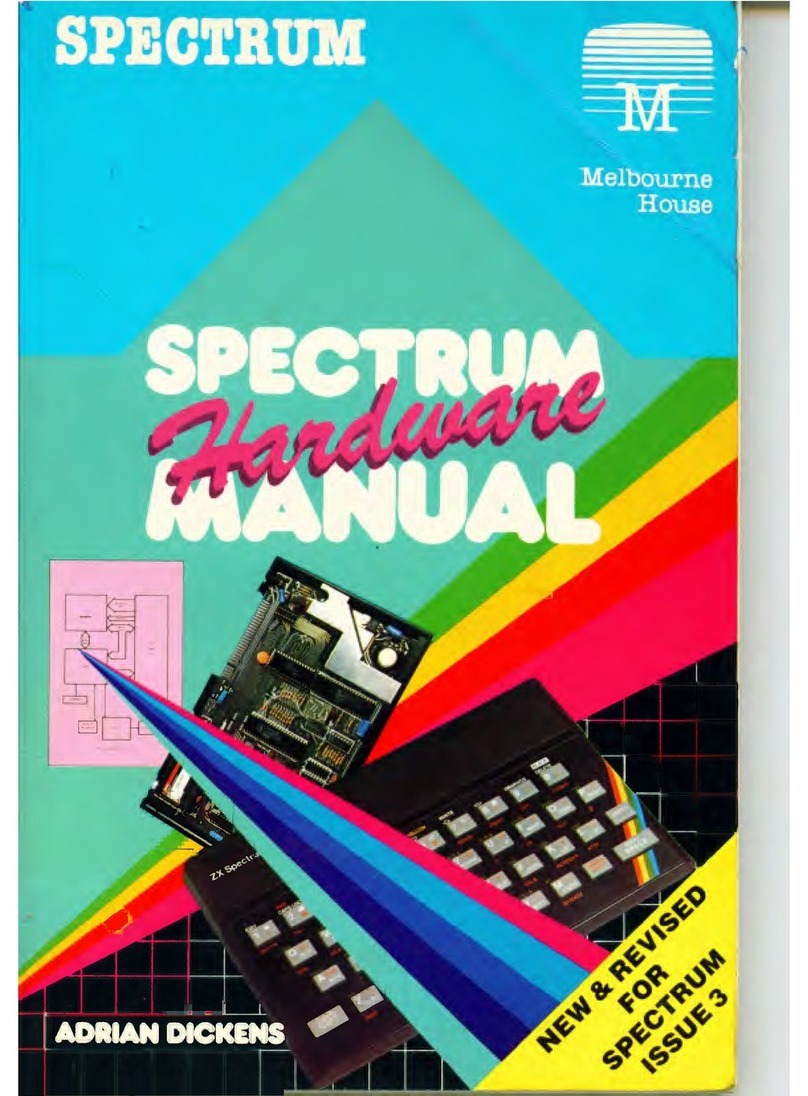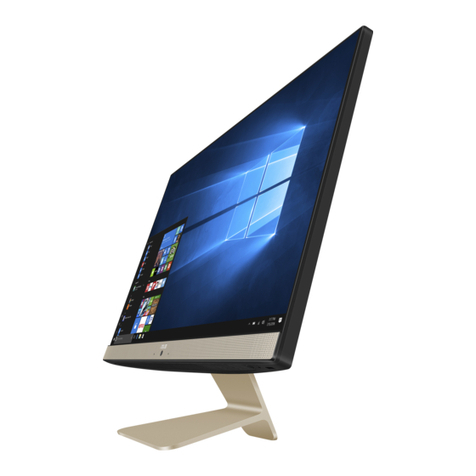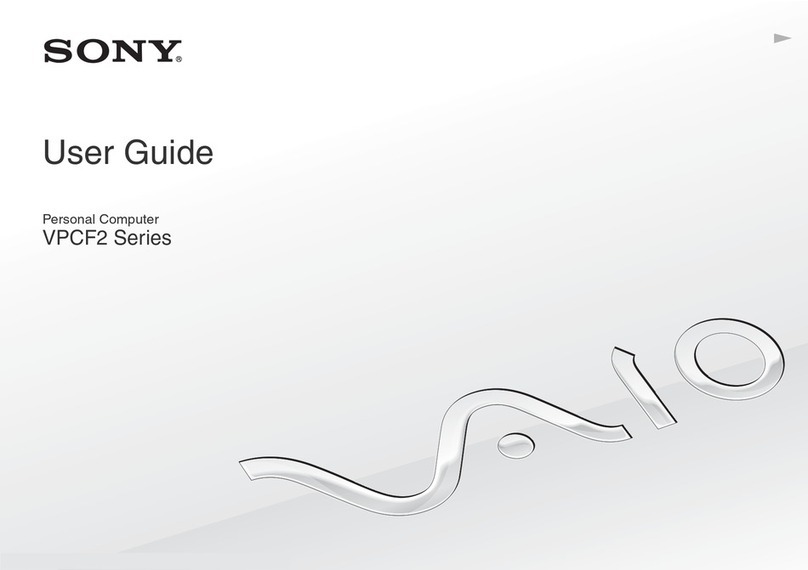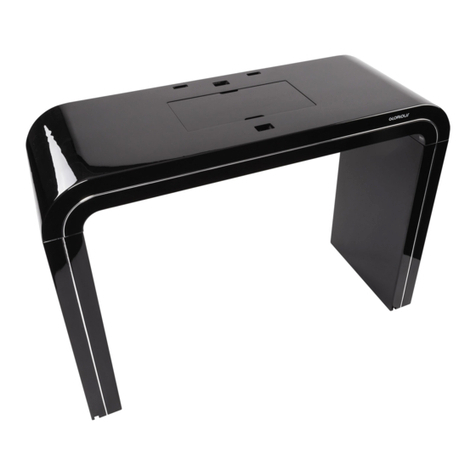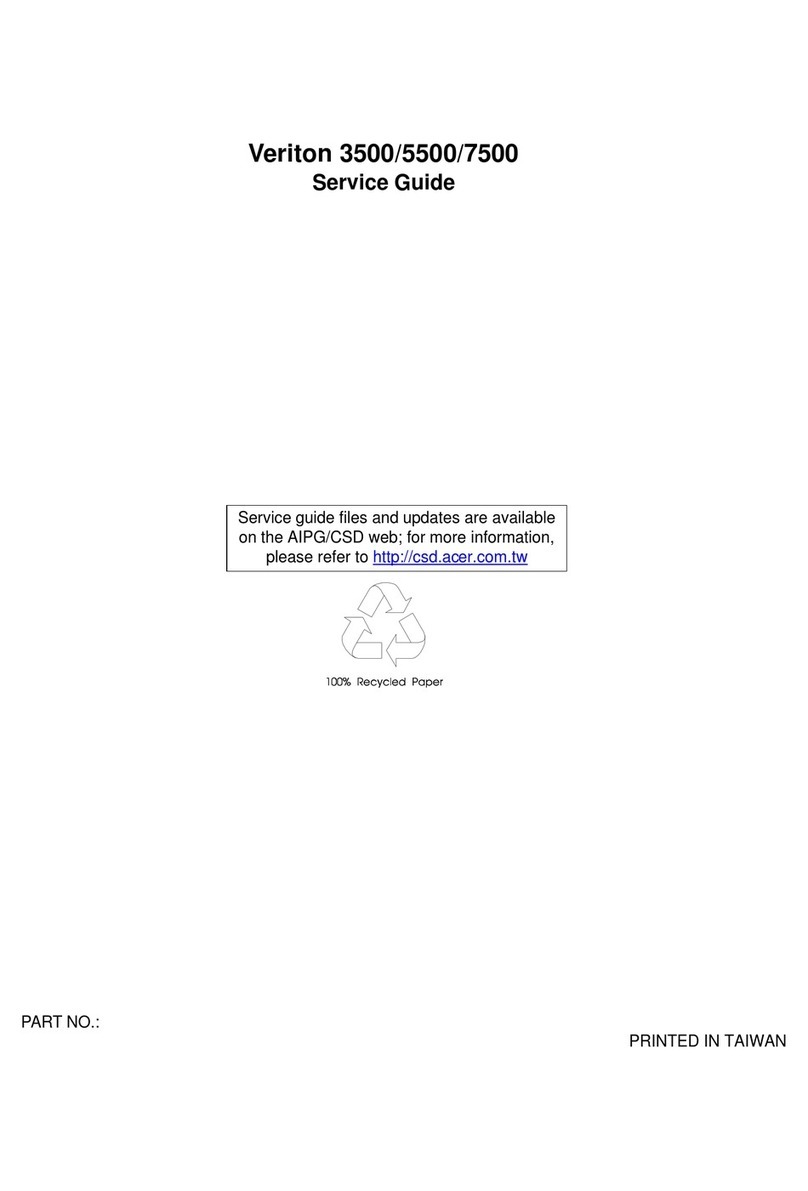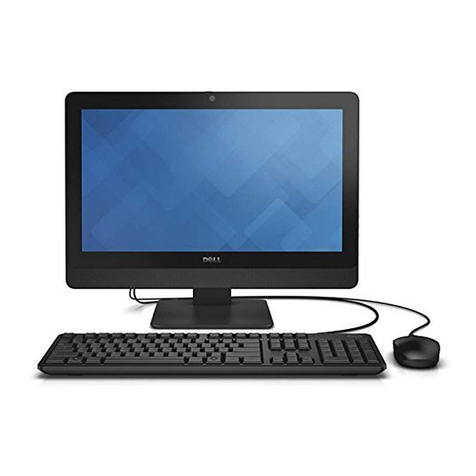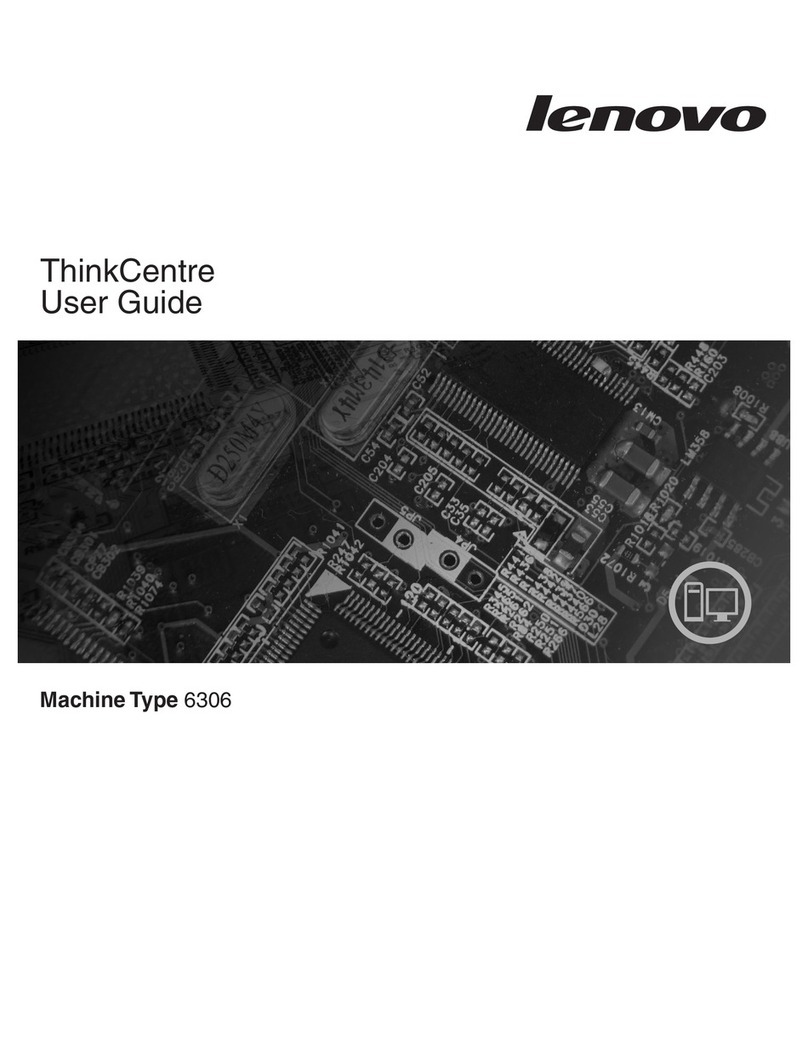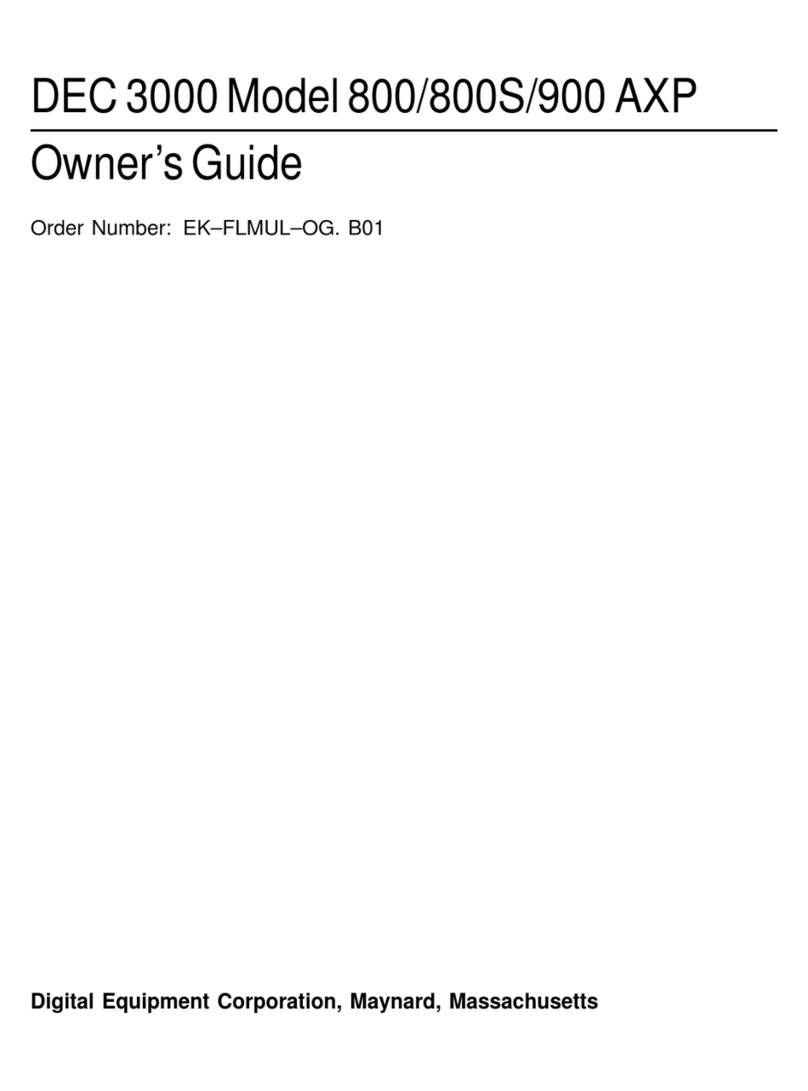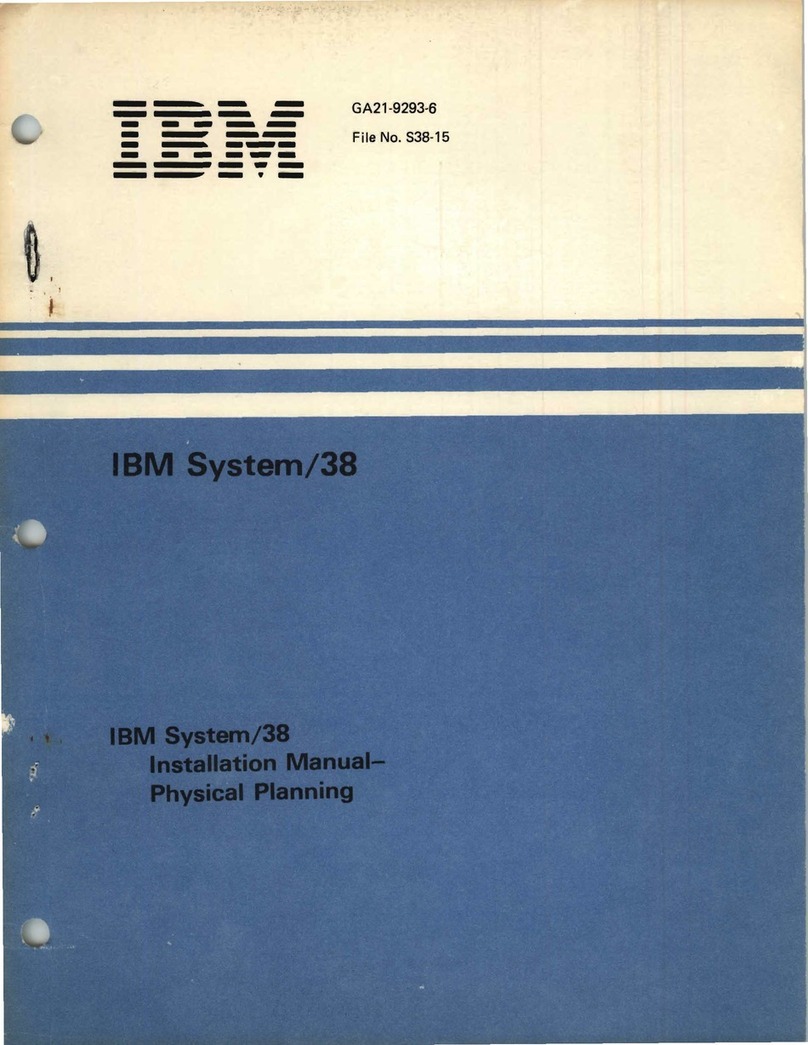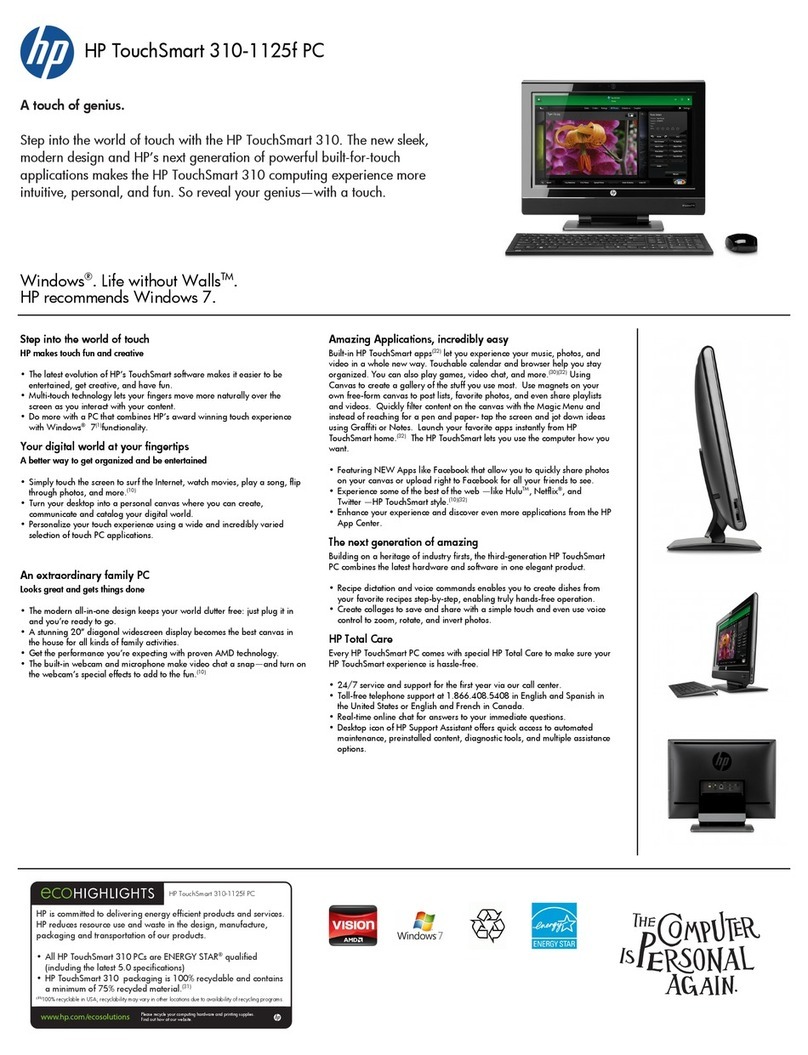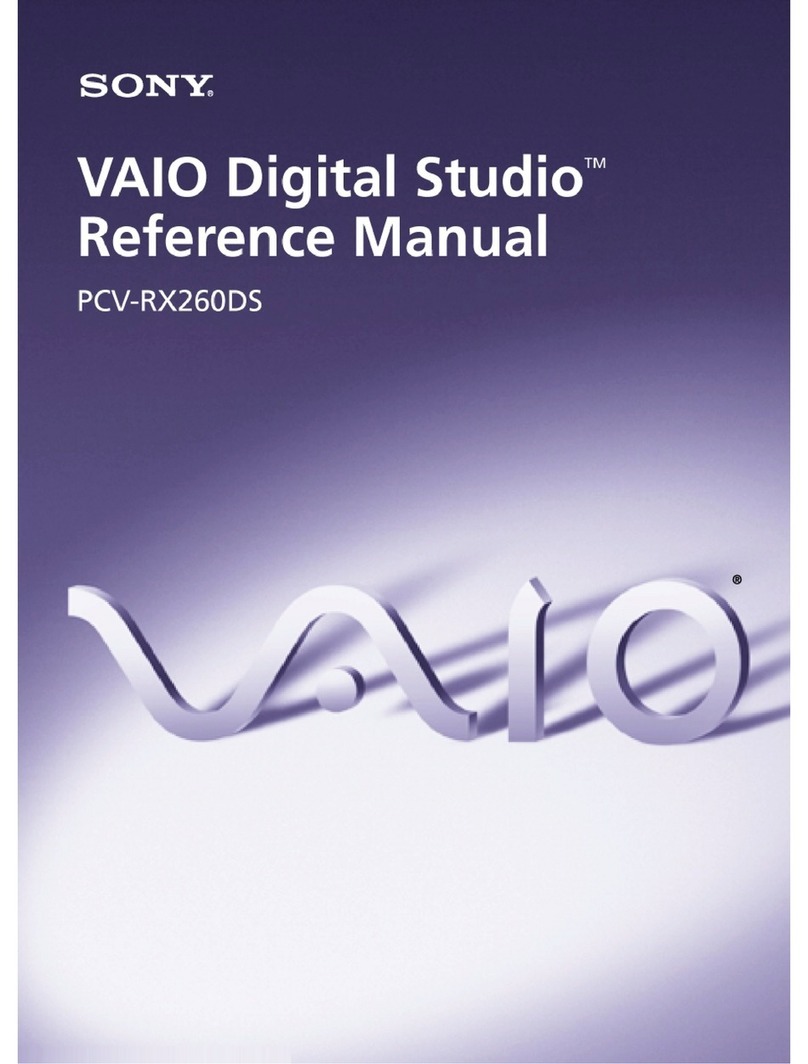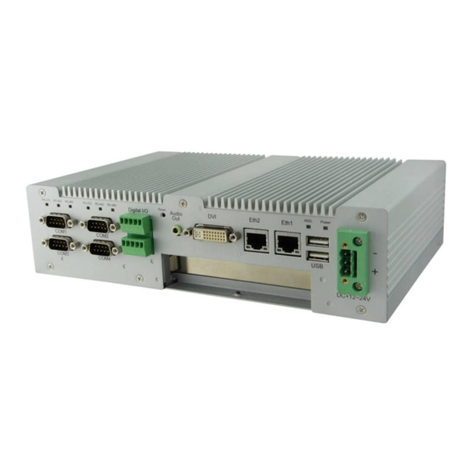Sinclair Research ZX Spectrum User manual

SERVICINGMANUAL
FOR
ZXSPECTRUM®
•LISTOFCONTENTS
INTRODUCTION
SECTION1 SYSTEMDESCRIPTION
SECTION2 DISASSEMBLY/ASSEMBLY
SECTION3 SETTINGUPANDSYSTEMTEST
SECTION4 FAULTDIAGNOSISANDREPAIR
SECTION5 PARTSLISTS
iLISTOFILLUSTRATIONSi
FigNo.
ZXSpectrumBlockDiagram1.1
ExpansionRAMRAS/CASTiming(ReadCycleshown)1.2
KeyboardMatrixInterconnections1.3
ZXSpectrum(Issue2)CircuitDiagram1.4
ZXSpectrum(Issue3)CircuitDiagram1.5
KeyboardFormat4.1
SpeakerLoadInputWaveforms4.2
ExpansionMemory1CLocations4.3
Issue3 Linksvs1CManufacturerandType4.4
PrintedCircuitBoard(Issue2)ComponentLayout5.1
PrintedCircuitBoard(Issue3)ComponentLayout5.2
PrintedCircuitBoard(Issue3B)ComponentLayout5.3
Prepared
by
THORN
(EMI)
DATATECH
LTD
forSINCLAIRRESEARCHLTDMARCH1984
©SinclairResearchLtd.
(i)

-INTRODUCTION
This
manual
isforuseby
authorised
SINCLAIR
dealers,engineersandrepresentativesasa guide
to
rectifying
faults
onthe
SINCLAIR
ZX
SPECTRUM
personalcomputer.
ThemanualrefersprincipallytotheIssue2 and
Issue3 Spectrumsbutprovidesa backgroundtothe
Issue1 versioninthesectiondealingwith
modificationhistory.
Basic
knowledge
ofZX
SPECTRUM
operating
proceduresisassumedasisknowledgeofcurrent
workshoppracticerelatingtomicrocomputers.
NOTE:
Essentialmodifications
are
required
onsomeIssue2 Spectrums.Referto
ModificationHistory(Section4)and
implementasnecessary.

-SAFETYMEASURES•
Thisinstructionmanualcontainscertain
—WARNING— andCAUTION-
noticeswhichMUSTbe-followedbytheuserto
ensureSAFEoperationandtoretainthe
equipmentina SAFEcondition.
Anyadjustment,maintenanceandrepairofthe
openedapparatusundervoltageshallbe
carriedcutonlybya skilledpersonwhois
AWAREOFTHEHAZARDINVOLVED.

SECTION1
SYSTEMDESCRIPTION
Sub-SectionLISTOFCONTENTSPageNo.
1Introduction1.1
2Architecture1.1
3Z80ACPU1.2
4MemoryOrganisation1.4
Read/WriteOperations1.4
5Input/Output1.6
TVPictureGeneration1.6
KeyboardScanning1.8
TapeInterface1.10
6PowerSupplies1.11
CircuitDiagrams
ZXSpectrum,Issue2 Fig.1.4
ZXSpectrum,Issue3 Fig.1.5
1.INTRODUCTION
1.1A blockdiagramofthecompleteZXSPECTRUMmicro-computerisgivenin
Figure1.1.Itisvalidforallbuildstandards,fittedwitheither
16kor48kbytesofdynamicRAMmemory.Althoughfunctionally
identical,detailedcircuitchangeshavebeenintroducedtoimprove
reliabilityandtoassistwithmanufacture.Theprintedcircuitboard
layouthasalsobeenmodified.Detailsofthesechangesare
highlightedwherenecessaryinthefollowingparagraphs,andinlater
sectionsreferringtofaultdiagnosisandrepair.
2.ARCHITECTURE
2.1The
architecture
ofthe
Spectrum
shown
in
Figure
1.1is
typical
of
many
microcomputersystems
in
that
it
comprises
a
single
microprocessorboard
(in
this
instance
a
Z80A
oru 780
CPU),
a
read
only
memory
(ROM),
an
expandable
RAM
memory
andan
input/output
sectionhandlingthekeyboard,tapeandTVdisplayfunctions.The
latterisrecognisableasthelogicgatearray(ULA)andthethree
functionalblocks
shown
inthe
right
ofthe
diagram.
2.2The
computer
is
built
ona
single
printed
circuit
boardwhich
also
includesa regulatedpowersupplyfedfromanexternal9Vpowerpack.
Thekeyboardmatrixispartoftheuppercaseassemblyandis
connectedtotheboardviatworibboncablesKB1andKB2.A
descriptionofeachsectionfollows.
1.1

3.Z80ACPU
3.1The
Z80A
isan
8-bit
single-IC
central
processing
unit
(CPU).
Itis
clocked
at
14.0
MHz
from
an
externalsourcecontrolled
bythe
logic
gatearray(ULA)andhasa standardthreebusinput/output
arrangement.ThesebusesaretheDataBus,AddressBusandControl
Busrespectively.
3.2
Data
Bus.
D7-D10
constitutes
an
8-bit
bi-directional
data
bus
with
active
high,
tri-state
input/outputs.
Itis
used
for
data
exchanges
withthememoryandwiththeULA.
3.3
Address
Bus.
A15-AO
constitutes
a
16-bit
address
bus
with
active
high,tri-stateoutputs.Theaddressbusprovidestheaddressfor
memory(upto64kbytes)dataexchangesandfordataexchangeswith
theULA.Itisalsousedduringtheinterruptroutine(seebelow)
whenscanningthekeyboardmatrix.
3.4ControlBus.Thecontrolbusisa collectionofindividualsignals
whichgenerallyorganisetheflowofdataontheaddressanddata
buses.Theblockdiagramonlyshowsfiveofthesesignalsalthough
othersofminorimportancearemadeavailableattheexpansionport
(seeFigures1.4and1.5fordetails).
3.5
Starting
with
memory
reguest
fMREQ),
this
signal
is
active
low
indicating
when
the
address
bus
holds
a
valid
address
fora
memory
read
or
memory
writeoperation.Input/Outputreguest
(IORQ)
is
also
active
lowbut
indicates
when
the
lowerhalf
ofthe
address
bus
holds
avalidI/OaddressfortheULAduringI/Oread/writeoperations.
3.6Thereadandwritesignals(RDandWR)areactivelow,andoneor
otherisactiveindicatingthattheCPUwantstoreadorwritedatato
a
memory
location
orI/O
device.
Allthe
control
signals
discussed
so
farareactivelow,tri-stateoutputs.
Thecontrolsignaldescribedhereistheinterrupt
3.7
last
maskable
(INT).
This
input
is
active
lowandis
generated
bytheULA
once
every20ms.EachtimeitisreceivedtheCPU'calls'the'maskable
interrupt'routineduringwhichthereal-timeisincrementedandthe
keyboardisscanned.
3.8CPU
Clock.Returning
totheCPU
clock
mentioned
earlier
in
this
section,theULAisabletoinhibitthisinputbringingtheCPUtoa
temporary
halt.
This
mechanism
gives
theULA
absolute
priority,
allowingittoaccessthestandard16kRAMwithoutinterferencefrom
theCPU(seeRAMdescription).SwitchingtransistorTR3ensuresthat
theclockamplitudeis+5VratherthansomearbitraryTTLlevel.This
isessentialiftheCPUistooperateeffectivelywhileexecutingfast
machinecodeprogramsofthe'spaceinvader'^'
1.2


3.9
Dynamic
Memory
Refresh.
TheCPU
incorporates
built-in
dynamic
RAM
refreshcircuitry.AspartoftheinstructionOPcodefetchcycle,
theCPU
performs
a
memory
requestafter
first
placing
the
refresh
addressonthelowereightbitsoftheaddressbus.Attheendofthe
cycletheaddressisincrementedsothatover255fetchcycles,each
rowofthedynamicRAMisrefreshed.Thismechanismonlyappliesto
theoptional32kexpansionRAMinthe48kSpectrum.Analternative
refreshmethodisadaptedforthestandard16KRAM.
4.MEMORYORGANISATION
4.1Inthe
standard
16k
Spectrum
there
are32k
bytes
of
addressable
memory
equallydividedbetweenROMandRAM.
4.2The
lower
16k
bytes
of
memory
(addresses
0000
-
3FFF)
are
implemented
ina singleROM(IC5)whichholdsthemonitorprogram.Thisprogram
isa complexZ80machinecodeprogramdividedbroadlyintothreeparts
one
eachcovering
the
input/outputroutines,
the
BASIC
interpreter
and
expressionhandling.Detailsoftheprogramcontent,althoughoutside
the
scope
of
this
manual,
are
referred
toas
necessary.
4.3The
upper
16
bytes
of
memory
(addresses
4000
-
7FFF)
are
implemented
using
eight
16kbit
dynamic
RAMs
(IC6-IC13).
Approximatelyhalf
of
this
space
is
available
tothe
user
for
writing
BASIC
or
machine
code
programs.Theremainderisusedtoholdthesystemvariables
including6kbytesreservedforthememorymappeddisplayarea.
4.4Inthe48kSpectrumanadditional32kbytesofRAMareprovided
(addresses
8000
-
FFFF)
which
are
implementedusing
eight
32kbit
dynamic
RAMs
(IC15-IC32).
The
RAM,providing
extra
memory
space
for
theuser,isnormallyfittedduringmanufacturebutmaybeadded
retrospectively
using
the
RAM
expander
kit.
In
addition
tothe
RAMs,
thekitincludestheaddressmultiplexerandread/writecontrolICs
IC23-IC26.
Board
space
andthe
necessary
discrete
components
are
alreadyprovidedontheboard.
4.5Read/WriteOperations
4.5.1Thefollowingdescriptionshouldbereadinconjunctionwiththe
circuitdiagramsgiveninFigures1.4and1.5.
4.5.2ReadOnlyMemory(ICS).TheCPUaddressestheROMdirectlyduring
memoryreadcyclesusingtheaddressbusA13-AO.MREQandRDenable
theROMandtheROMoutputsrespectively.A thirdinput(CS)derived
bytheULA'ROMCS)selectstheROM,providedthehigherorderaddress
bitsA14andA15arebothlow.Thesearereservedforaccessingthe
RAMmemorywhichstartswithaddress4000(i.e.addressA14set).An
externalROM1Cselectinput,suppliedviatheexpansionportonpin
25A,selectivelydisablestheon-boardROMbypullingtheselectinput
high.ByvirtueofR33placedontheULAsideoftheROMtheULA
ROMCSoutputiseffectivelyinhibited.Interface1 usesthis
1.4







mechanismallowingtheCPUtoreadtheextensionROMintheinterface
formicrodriveandRS232applications.
4.5.3
Links
H andN,
shown
directly
above
IC5,
allow
a
second
source
ROMto
be
fitted.
The
Hitachi
(H)andNEC(N)
ROMs
use
differentpins
for
the
enable
and
select
inputs(i.e.pins
20and
27).
The
links
allow
theinputstobereversedaccordingly.
4.5.4Standard16kRAM(IC6-IC13).Theeight16kRAMICsmakingupthe
standard16kx 8 bitRAMmemoryareorganisedasa matrixof128rows
x128columns.Thus,separate7-bitrowandcolumnaddressesare
reguiredtoaccessanyoneofthelocations.Theseaddressesare
suppliedbytheCPUonaddressbusA13-AOviaanaddressmultiplexer
IC3/IC4.
Thelow
orderaddress
bits
A6-AO
give
therow
address
and
are
selected
atthe
beginning
ofthe
memory
accesscycle
when
initially
theRAS
output
from
theULAis
high.Later,
astherow
address
is
latched,
RAS
goes
low
selecting
the
highorderaddress
bits
A13-A7givingthecolumnaddress.
4.5.5TheRAS/CASoutputsfromtheULAaregeneratedinseguenceinresponse
to
MREQ
andA14
from_the
CPU.
The
DRAMWE
output,also
from
theULAis
a
decode
ofthe
RD/WR
waveforms
telling
theRAMto
expect
either
a
readora writecycle.
4.5.6
Itis
alsoapparent
from
the
circuit
diagram
that
theULAcan
access
RAMbygeneratinga setofaddressesindependentofthosegeneratedby
theCPU.TheaddressportfortheRAMisthereforedualledbythe
insertion
of
smallvalue
resistors
(R17-R23)
onthe
address
multiplexersideoftheRAM.Thisensuresthatwherethereislikely
tobeconflictbetweentheULAandCPU,theULAaddresshaspriority.
Priority
is
assigned
onthe
basis
that
theULA
must
access
the
memory
mappeddisplayareaintheRAMatsetintervalsinordertobuildup
thevideofortheTVdisplay.IftheULAisabouttoaccesstheRAM
anditdetectseitherA14orA15(i.e.theCPUisalsoabouttoaccess
theRAM)theULAinhibitstheCPUclocktemporarilyhaltingtheCPU
memory
transaction
until
itsown
transaction
is
completed.
4.5.7Resistors
RltoR8,in
series
with
the
data
bus
lines,
perform
a
similar
function
tothe
addressportplr£sistorsdescribedabove.
They
ensurethattheULAdoesnot'see'CPUwritedatawhiletheULAis
accessingtheRAM.
4.5.8Refreshforthestandard16kdynamicRAMisaccomplishedduringnormal
readcycles,i.e.mostrowsarerefreshedeachtimetheULAaccesses
the
memory
mapped
displayareaduring
picture
compilation;
the
remaining
rows
are
refreshed
asa
result
of
otherread
cycles
also
known
to
occur
at
regular
intervals
within
the
refreshperiod.
1.5

4.5.9
32k
Expansion
RAM
(IC15-IC32).
The
eight
32kICs
making
upthe32kx
8bitexpansionRAMareinfact64kICswitheitherroworcolumn
drop-outrenderingonehalfofthememorynon-functional.Inorderto
accommodate
the
Texas
Instruments
RAM
(Type
TMS
4532)
orthe
optional
OKIRAM
(Type
MSM3732)
a setof
links
are
provided,
visible
onthe
circuit
diagram
above
the
address
multiplexer
IC25/IC26.
These
links
notonlycaterforthedifferentmanufacturer(Issue3 Spectrumsonly)
butalsoallow,inbothinstances,oneoftwo1Cversionstobe
selecteddependingonwhichhalfoftheRAM(top,bottom,leftor
right)isfunctional.ThelinksarerespectivelyTIandOKI
(manufacturer- Issue3 Spectrumsonly),-3/-4(TIversion)and-H/-L
(OKIversion- Issue3 Spectrumsonly).
NOTE:
Itis
essential
when
replacing
ICsin
this
area
that
all
RAMs
carry
the
same
manufacturers
part
number
and
that
the
links
areselectedaccordingly.
4.5.10TheexpansionRAMisorganisedasa matrixof128rowsx 256columns
(TI
RAMs)
or256
rows
x 128
(OKI
RAMs).
Thus,
separate
7/8bitrow
andcolumnaddressesarerequiredtoaccessanyoneofthese
locations.TheseaddressesaresuppliedbytheCPUonaddressbus
A14-AOviaanaddressmultiplexerIC25/IC26.Forexample,when
accessingtheTIRAMtheloworderaddressbitsA6toAOgivetherow
address;ARisheldlowonthe-3versionselectingthetophalfof
the
memory
and
high
onthe-4
version
selecting
the
bottom
half.
The
column
address
is
given
bythe
highorderaddress
bits
A14-A7.
4.5.11
Row/column
address
selection
and
RAS/CAS
timing
forthe
RAM
is
decoded
in
IC23/IC24
from
inputs
supplied
bythe
CPU,i.e.address
line
A15
selecting
addresses
8000
upwards,
and
MREQ
heralding
a
memory
read
or
writecycle.
A
theoretical
timingdiagram
illustrating
the
RAS/CAS
waveformsisgiveninFigure1.2.
5.INPUT/OUTPUT
5.1Theinput/outputsectionoftheSpectrumiscenteredroundtheULA
(IC1).ThefunctionsperformedwithinthedeviceincludeTVvideo
compilation,keyboardscanningandtapeinput/output.Italsoderives
and
controls
theCPU
clock
(<j>CPU)
using
an
external
14MHz
crystal
XI,
and
drives
the
loudspeaker
when
a
'BEEP'
instruction
is
being
executed.
Each
of
these
sections
andthe
supporting
circuits
are
describedbelow.
5.2TVPictureGeneration
5.2.1ThevideocompilationsectionoftheULAoperatesinconjunctionwith
the
memory
mapped
picture
displayarea
inthe
standard
16k
RAM,
the
colour(chrominance)modulator(IC14)andtheUHFmodulator.This
combinationproducesa highresolution,24linex 32character,eight
colourTVdisplay.
1.6

FIG1.2EXPANSIONRAMRAS/CASTIMING(READCYCLESHOWN)
1.7

5.2.2
Using
the14MHz
clock
theULA
derives
line
and
fieldtiming
compatiblewiththeexternalTVreceiver.Videoisderivedby
accessingthememorymappeddisplayareaintheRAMina setseguence
atsettimesthroughoutthepictureframe.Theaddressesare
necessarilyindependentoftheCPUandappearontheULAaddresslines
A6
through
AOastwo
separatebytestimed
bythe
RAS/CAS
row/column
addressselectlines.
5.2.3
Thenet
result
is
three
separatevideo
waveforms
outputs
from
theULA
onpins15,16and17.ThesecarrytheluminancesignalY,
incorporatingthelineandfieldsync,andtwounmodulatedcolour-
differencesignalsU andY makingtheSpectrumcompatiblewithboth
colourandmonochromereceivers.
5.2.4
From
theULAthe
colourdifference
signals
are
applied
tothe
colour
modulatorIC14viatwolevelshiftingnetworks.ThesematchtheULA
outputlevelswiththosereguiredattheB-YandR-Yinputstothe
modulator.IntheIssue2 Spectrumthelevelshiftingnetworkis
passive,incorporatingtwopotentiometersVR1,VR2.Theseare
reguired
to
set-up
the
chroma
bias
level
on
IC14
pin3
such
that
the
voltagedifferencemeasuredbetweenpin3 andthecolourdifference
signals
on
pins
2 and3
respectively
is
nominally
0V
d.c.
Inthe
Issue3 SpectrumtwoactivenetworksincorporatingIRSandTR9
eliminatethepotentiometers,greatlyimprovingcolourstability.
5.2.5Thelevelshiftedcolourdifferencesignals,inputtoIC14,arethen
encoded,byguadraturemodulatingtwo4.43MHzchromasub-carriers.
Thesub-carriersaregeneratedwiththeassistanceofanexternal
crystalX2anda CRlead/lagnetworkintroducinga 90°phaseshift
betweenpins1 and18.(AfurtherdifferencebetweentheIssue2 and
3
Spectrums
lies
inthe
bias
oscillator.
The
early
issues
incorporate
atrimmerTC2allowingthechromasub-carrierfreguencytobe
adjusted;
onthe
later
issues
the
freguency
is
fixed).
The
resultant
modulatedcolourdifferencesignalsarefinallymixedproducinga
compositechromasub-carrieratIC14pin13.
5.2.6
At
this
point
the
chroma
signal
is
a.c.coupled
tothe
base
ofTR2and
addedtotheinvertedluminencesignalonTR1collector.The
resultantcompositevideoisthenbufferedandappliedtoan
encapsulatedUHFmodulatoroperatingonEuropeanstandardchannel36.
5.3KeyboardScanning
5.3.1Every20ms(i.e.oncepermaskableinterrupt),theCPUsystematically
scansthekeyboardrecordingwhich'keys'(ifany)havebeenpressed.
ThescanningmethodisdescribedbelowwiththeaidofFigure1.3.As
the
figure
clearly
illustrates
the
keyboard
consists
ofan8 x 5
matrix,theinter-sectionofeachrowandcolumnbridgedbya normally
openswitchcontact.Therow'outputs'andcolumn'inputs'areshown
connectedbyseparateribboncablesKB1andKB2,onetotheULAand
the
other
tothe
highorderaddress
lines
A15-A8.
Pull-up
resistors
R64
through
R68
ensure
that
when
the
address
busisinthe
high
Z
state,
or
none
ofthe
key-switches
is
closed,
row
outputs
KBOtoKB4
remainhigh.


5.3.2
When
the
keyboard
scanningroutines
are
entered
theCPU
performs
successive
I/O
readcycles
setting
the
IOREQ
andRD
lines
tothe
IJLA,
low.Atthesametime,theI/Oportaddressesplacedontheupper
halfoftheaddressbusaremodifiedwitheachcyclesuchthateachof
theaddresslinesA15throughA8issetlowinturn,theotherlines
remaininghigh.
5.3.3TheseguencestartswithI/OportaddressFEdrivingaddresslineA8
low.
The
keyboard
matrix
also
sees
this
potential
on
column
6
applied
viaD6andtheribboncableKB2.Thus,whenanyoftheswitcheson
theinter-sectionwithcolumn6 ispressed,thecorrespondingrow
outputsupplying
theULAviathe
second
ribbon
cable
(KB1),
is
pulled
low.Therowsignal(s)issubseguentlyinvertedbytheULAandplaced
ononeofthe
five
low
orderdata
bus
lines.
For
example,
ifthe
CAPS
SHIFT
keyis
pressed
rowone
output
drives
data
busDO
high
andsoon.
TheseguenceendswithI/Oaddress7Fwhencolumn8 isaddressed.In
this
instance,operation
ofthe
SPACE
key
drives
DO
high.Clearly,
the
keyboard
scanningroutines
make
the
distinction
between
the
CAPS
SHIFT
and
SPACE
keyby
knowing
which
address
line
is
beingdriven.
5.4TapeInterface
5.4.1
WhenLOADing
or
SAVEing
programs
using
a
cassette
recorder,
theULA
transfersinformationbetweentheMICandEARsocketsandthedata
bus,
performing
A/DandD/A
conversions
as
reguired.Since
the
LOAD
and
SAVE
functions
are
mutuallyexclusive,
a
single
pinontheULA
(i.e.pin28)isusedbothforinputandoutput.SeparateI/O
read/writecyclestoportaddress254configurethepinaccordingly.
During
the
LOAD
operation
theCPU
executessuccessive
I/O
readcycles,
reading
theEAR
input
off
data
bus6.
When
performing
a
SAVE
operation,theCPUexecutessuccessiveI/Owritecycles,thistime
writingdatatotheMICoutputviadatabus3.
5.4.2
To
ensure
that
I/O
cycles
are
correctly
implemented,
the
IOREQ
line
supplying
theULAis
gatedwithaddress
line
AOvia
TR6.
Thus,
ifany
memorytransactionsoccurwhereAOishigh(i.e.notportaddress254)
then
the
IOREQ
input
is
forced
high
inhibiting
any
attempt
to
perform
anI/Ocycle.
5.4.3
Loudspeaker
(BEEP)
Operation.
It
should
be
noted
that
while
SAVEing,
theleveloftheMICoutputisbarelysufficienttodrivethe
loudspeakerviaD9andTR7(D10).However,duringtheexecutionofa
BEEP
instruction
theCPU
writesinstead
to
port
254on
data
bus4.
ThiseffectivelybooststheMICoutput,drivingtheloudspeakerso
that
the
BEEP
tone
canbe
easily
heard.
During
the
execution
of
such
aninstructionthecassetterecorderisnotrunningsothereisno
conflict
atthe
MIC/EAR
sockets.
1.10

6.POWERSUPPLIES
6.1The
on-board
power
supply
unit
receives
a 9V
unregulatedsupply
from
theexternalSinclairZXpowerpackandderivesthefollowinginternal
supply
rails:
(a)regulated+5Vforthe1Clogiccircuits,theULAandtheUHF
modulator,
(b)-5Vand+12Vforthestandard16kdynamicRAM,
(c)+12Vforthecolourmodulatorcircuits.
6.2Theexternalpowerpackincorporatesa mainstransformer,fullwave
rectifierandcapacitivesmoothing.A thermalfuseisfittedatthe
transformerinput.
6.3The
on-board
power
supply
unit
incorporates
a
7805
regulator,
deriving
the+5V
power
rail,
andan
inverter
stage
TR4/TR5.
The
latter
raises
thelevelofthe+9Vunregulatedsupplytoinexcessof+12V.The
resultantsguarewaveatthejunctionofTR4collectorandthe
inverter
coil
is
subseguently
rectified
and
smoothed
by
D5/C44
producingthe+12VoutputfortheRAM.Additionalsmoothing,imparted
by
R62/C45,
produces
the
+12Vsupply
fortheTV
circuits
free
from
noisegeneratedbytheRAM.ThesguarewaveatTR4collectoralso
supplies
the
Zener/rectifier
diodecombination
D16/D12
generating
-5V
fortheRAM,andisavailableattheexpansionportforuseby
peripherals.The+12V,+5Vand-5Varealsomadeavailable.
Other manuals for ZX Spectrum
1
Table of contents
Other Sinclair Research Desktop manuals
